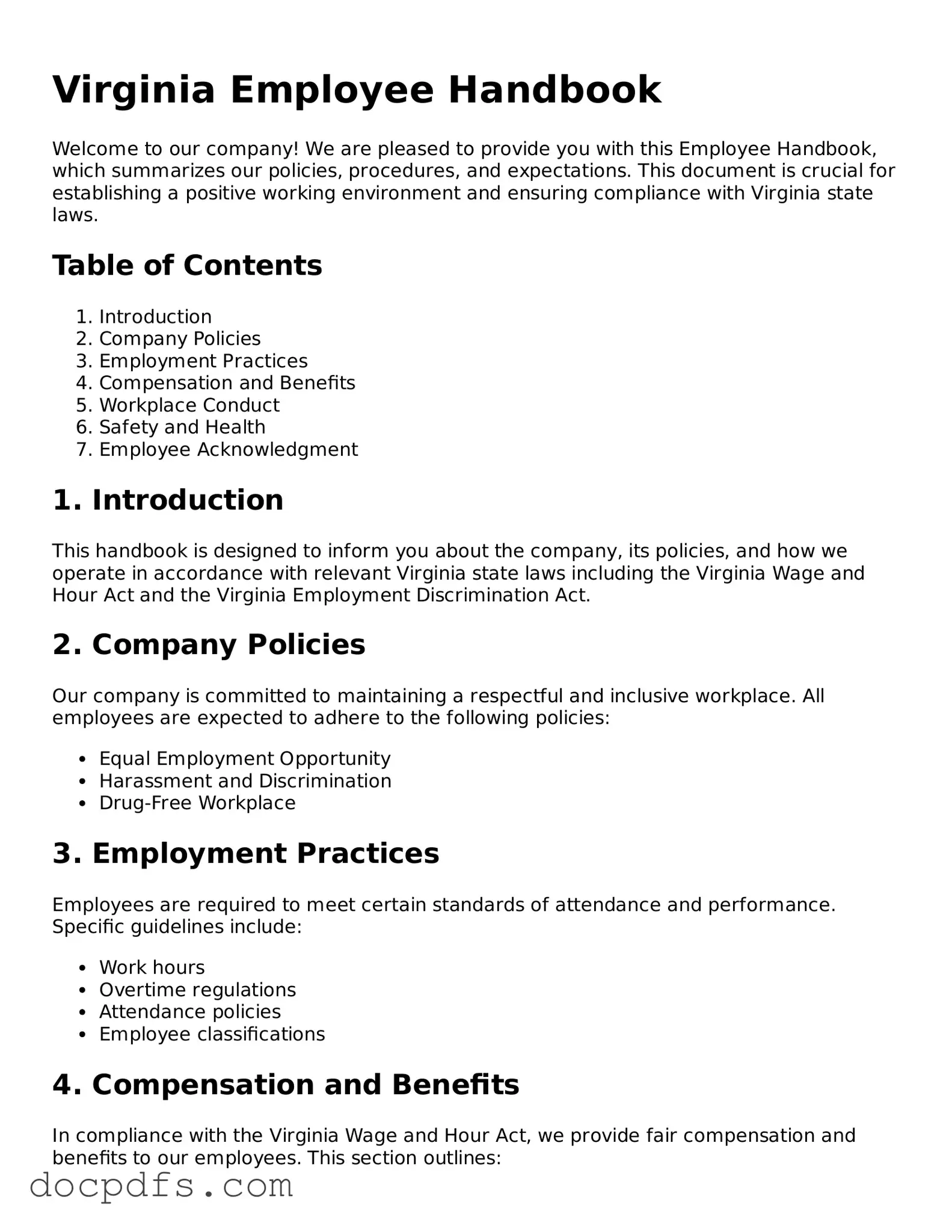The Virginia Employee Handbook form is a document that outlines the policies, procedures, and expectations for employees within a Virginia-based organization. It serves as a guide to help employees understand their rights and responsibilities at work.
Why is an Employee Handbook important?
An Employee Handbook is crucial for several reasons:
-
It sets clear expectations for employee behavior and performance.
-
It helps ensure compliance with state and federal laws.
-
It provides a resource for employees to reference when they have questions about company policies.
-
It can help protect the employer in case of disputes by documenting policies and procedures.
Who should receive a copy of the Employee Handbook?
All employees should receive a copy of the Employee Handbook, whether in print or digital format. This includes full-time, part-time, and temporary employees. New hires should receive the handbook during their orientation process, while existing employees should be informed of any updates or changes to the policies.
How often should the Employee Handbook be updated?
The Employee Handbook should be reviewed and updated regularly, ideally at least once a year. Changes in laws, company policies, or organizational structure may necessitate updates. It is essential to keep the handbook current to ensure compliance and relevance.
What should be included in the Employee Handbook?
A comprehensive Employee Handbook should include the following sections:
-
Company mission and values
-
Employment policies (hiring, termination, etc.)
-
Workplace conduct and behavior expectations
-
Compensation and benefits information
-
Leave policies (sick leave, vacation, etc.)
-
Health and safety guidelines
-
Disciplinary procedures
-
Equal employment opportunity statement
How can employees provide feedback on the Employee Handbook?
Employees should feel encouraged to provide feedback on the Employee Handbook. They can do this through various channels, such as employee surveys, suggestion boxes, or direct communication with their supervisors or the HR department. Open communication helps ensure the handbook remains relevant and effective.
Is the Employee Handbook a legally binding document?
While the Employee Handbook outlines policies and procedures, it is generally not considered a legally binding contract. However, it can serve as a reference point in disputes. Employers should include a disclaimer stating that the handbook is for informational purposes and does not create an employment contract.
What should an employee do if they have questions about the handbook?
If an employee has questions about the Employee Handbook, they should reach out to their supervisor or the HR department for clarification. It is important for employees to understand the policies that affect their employment and workplace environment.
Can the Employee Handbook be customized for different departments?
Yes, the Employee Handbook can be customized for different departments within an organization. While there should be a core set of policies applicable to all employees, specific departments may have unique procedures or expectations that warrant additional guidelines.
